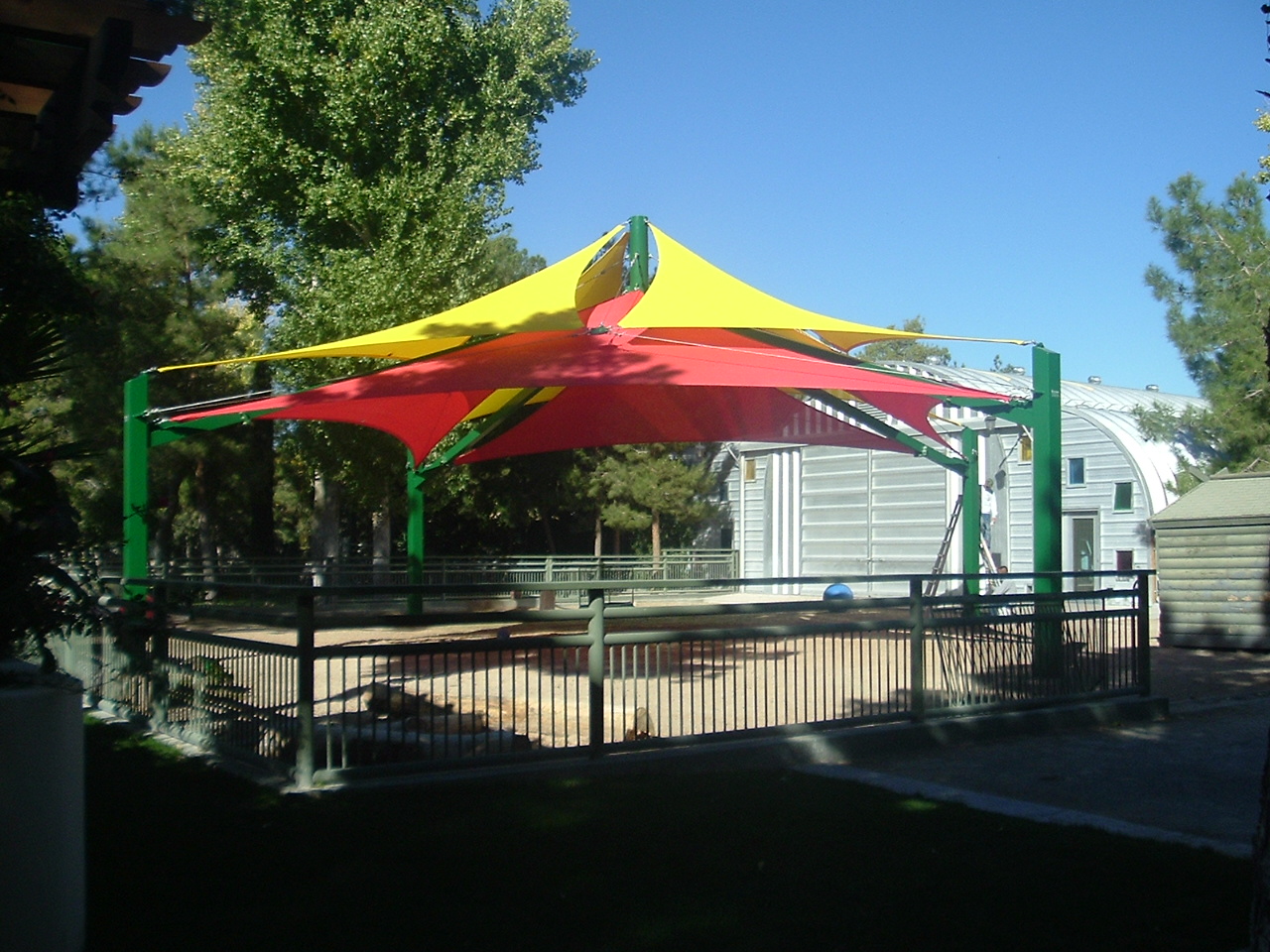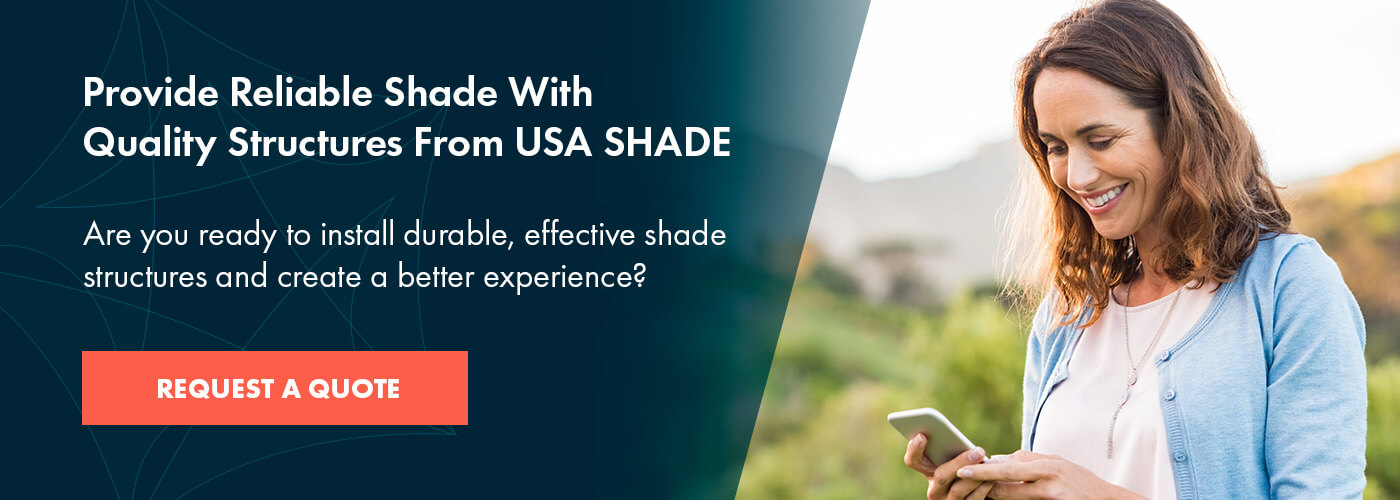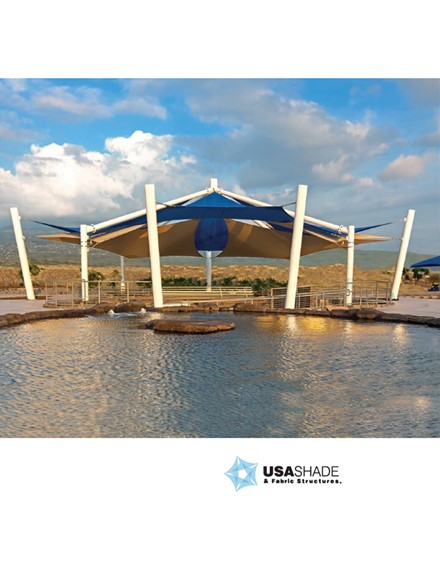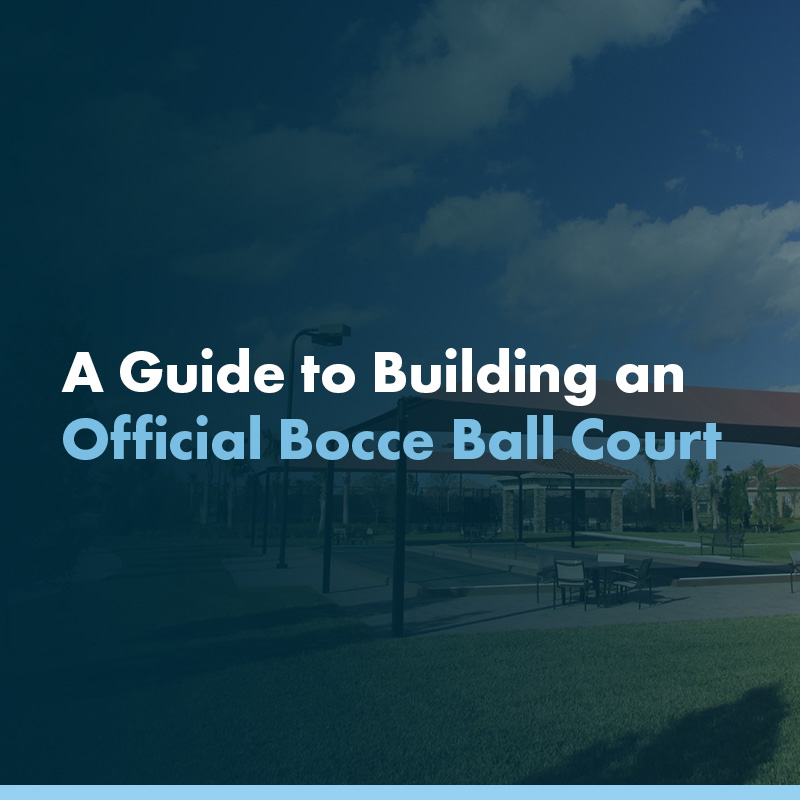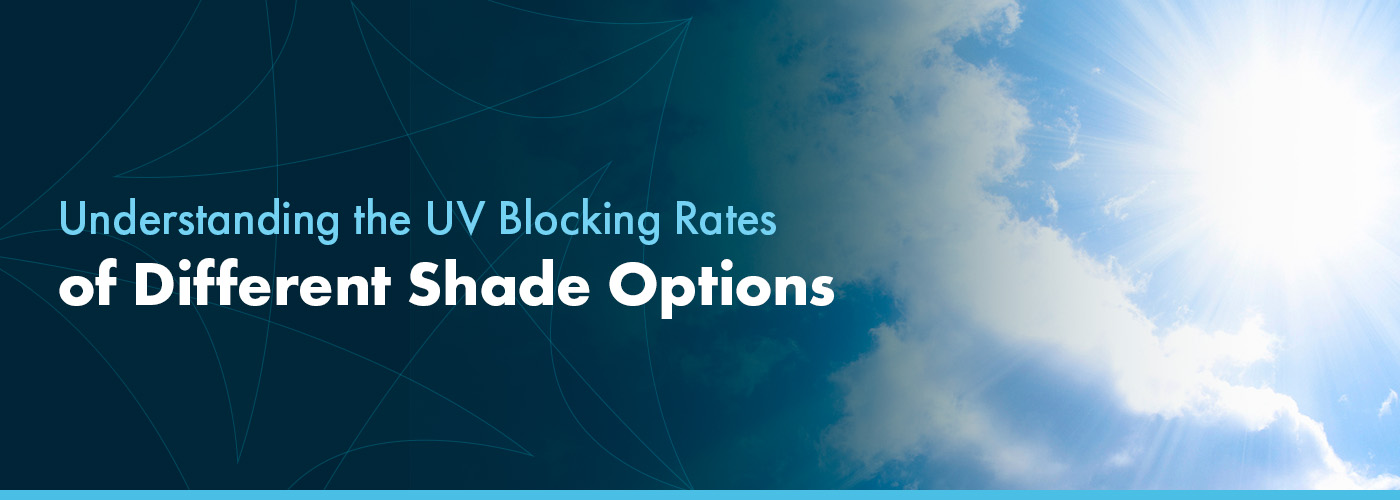
As a business owner or manager of outer public spaces, one of your priorities is the well-being of your customers or visitors, and sun protection is essential. Shade options come in different forms with varying ultraviolet (UV) blocking rates. Understanding the UV blocking rates of different shade options will help you choose the right options for your location and business type.
Whether you’re looking for umbrellas or shade structures, you want to find something that will shield individuals from heat and sunburn while offering comfort and visual appeal around the property. With this guide, we provide detailed insights into UV blocking rates of various shade options and fabric types. This way, you can make informed decisions to create safer and more enjoyable outdoor environments for visitors.
Understanding UV Rays and Exposure
It’s fun to spend time under the sun while getting much-needed vitamin D. But too much sun exposure can also negatively affect our health, mainly due to UV light. UV light is a form of electromagnetic radiation that comes from the sun’s rays. It has a short wavelength and is invisible to the human eye.
Three types of UV rays exist:
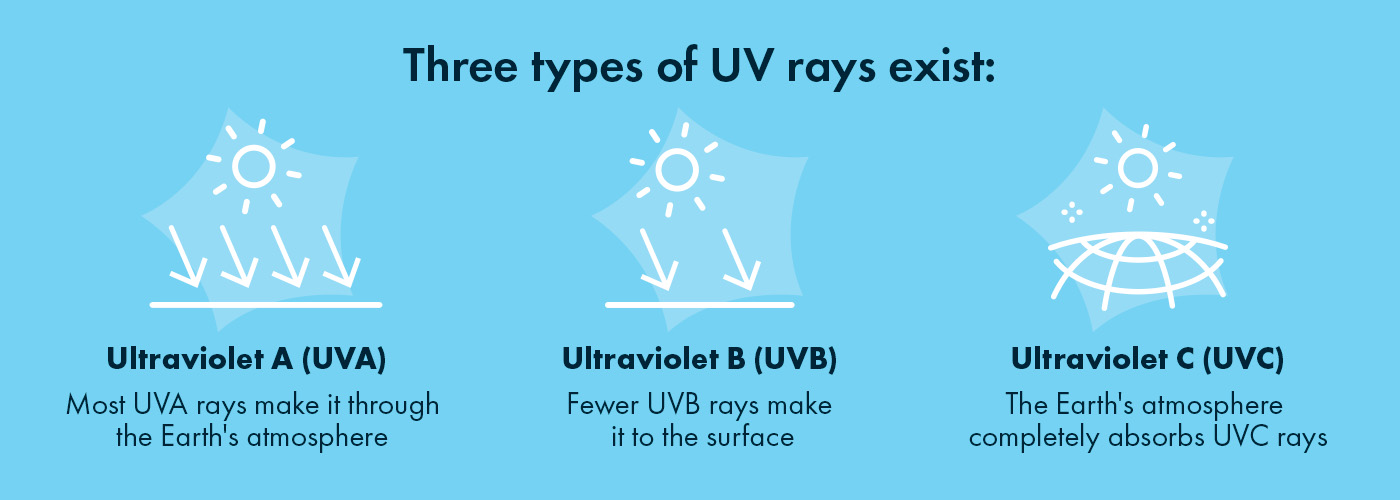
- Ultraviolet A (UVA): Most UVA rays make it through the Earth’s atmosphere and have the most impact on the surface. UVA rays have the longest wavelength of the three UV ray types.
- Ultraviolet B (UVB): Fewer UVB rays make it to the surface than UVA rays, depending on latitude, altitude and time of year.
- Ultraviolet C (UVC): The Earth’s atmosphere completely absorbs UVC rays, minimizing most of its harmful effects. UVC rays have the shortest wavelength of the three.
UVA and UVB rays affect human health, although UVA is more constant and penetrates deeper into the skin. Sunburn is the effect of short-term exposure to UV rays, while long-term unprotected exposure can lead to more negative health effects, such as:
- Blinding eye diseases such as cataracts
- Premature aging
- Skin cancer
- Actinic keratoses
- Suppressed immune system
All parts of the Earth’s surface receive sunlight from various angles during the day. The amount of sun rays that reach any one spot on the surface will depend on the location, time in the day, season, landscape and weather.
Therefore, not all shaded areas provide adequate sun protection due to the different kinds of radiation reaching the Earth’s surface:
- Beam radiation: Beam radiation travels straight from the sun to the surface without being scattered or diffused, heating any surface directly. Turning physical barriers, such as umbrellas, toward the sun would protect you from beam radiation.
- Reflected radiation: Some sun rays bounce off surfaces like water, sand, snow or buildings before reaching your skin. Reflected radiation can come from any angle. The amount of radiation that reflects depends on the surface’s reflectivity.
- Diffuse radiation: Air molecules, clouds, dust and pollutants can absorb and scatter sunlight, diffusing radiation before it reaches the surface. This type of radiation is more evenly distributed and less intense than beam radiation but can still contribute to UV exposure.
Common Misconceptions About Sun Protection in Shaded Areas
One of the best ways to protect yourself from UV light while outdoors is to seek shade. However, UV exposure can still occur in the shade without proper protection. Knowing that UV rays can reach you from different sources debunks a few UV exposure myths regarding shaded areas.
1. You Don’t Need Sunscreen in the Shade
Many people believe they’re safe from UV rays in shaded areas, but UV exposure can still happen when you’re sitting under a tree or standing under an awning. As a result, you can get a sunburn in the shade.
Different types of radiation reach the surface of the Earth, and sun rays can reflect off surfaces like water, sand, snow, cement and buildings. As a result, UV radiation can reach you from any angle and give you a sunburn while you’re seeking cover in the shade.
The only way to protect yourself from sunburn is to use other sun-safety measures, like sunscreen, in addition to seeking shade.
2. UV Rays Can’t Penetrate Fabric
Whether shade protects you from UV rays depends on the structure you’re using as shelter. Even though different types of fabric provide protection from UV light, a small portion of UV rays may still get through. Still, seeking shelter under fabric structures is better than staying in the sun.
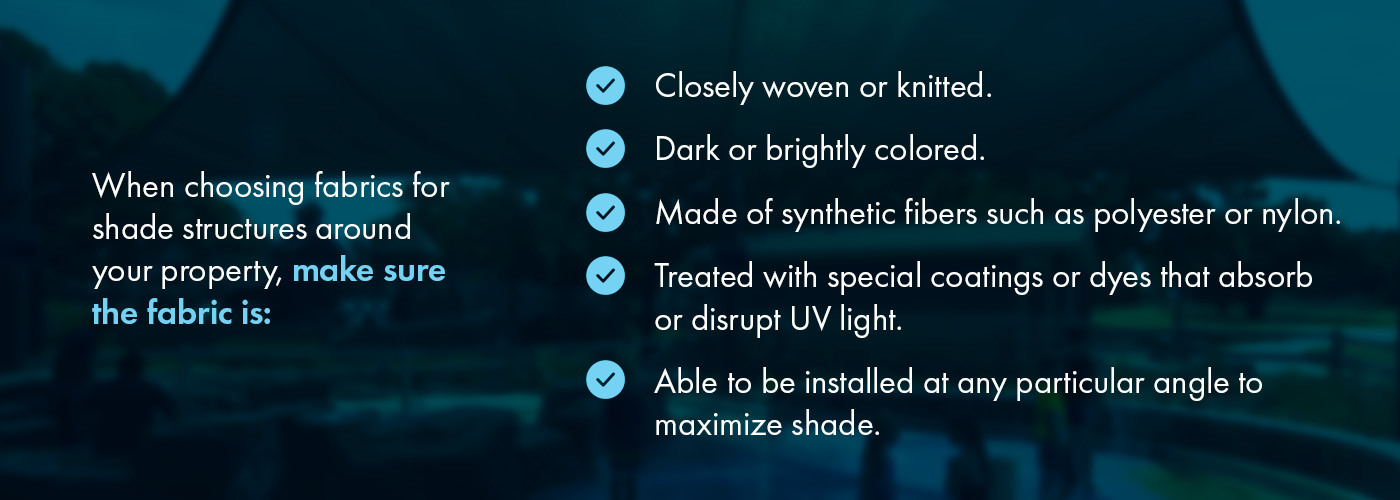
When choosing fabrics for shade structures around your property, make sure the fabric is:
- Closely woven or knitted.
- Dark or brightly colored.
- Less stretchy.
- Made of synthetic fibers such as polyester or nylon.
- Treated with special coatings or dyes that absorb or disrupt UV light.
- Able to be installed at any particular angle to maximize shade.
3. You’re Safe From UV Exposure on Cloudy Days
Clouds reduce the intensity of sunlight. However, UV rays can still pass through clouds and reach the surface. As a result, it’s still important to wear sunscreen and sit under shade structures when outside during a cloudy day.
As a business owner, you can provide an array of shade structure options on your property, knowing that you’re giving patrons plenty of ways to keep themselves protected, even when the sun isn’t out.
4. Indoor Areas Are Safe From UV Radiation
Indoor areas will keep you safe from UV radiation, provided you stay away from windows and glass roofs. While UVB rays cannot pass through glass, some UVA rays can. In other words, you won’t get a sunburn from sitting next to a window on a sunny day, but you could still be exposed to UV rays. It can be helpful to stay away from building openings when you’re seeking respite from the sun inside.
Your business can help mitigate how much sun — and therefore how much UV radiation — enters the building through windows by strategically placing shade structures near these openings.
Factors That Affect UV Blocking Rates
The UV blocking rate is the percentage of UV radiation that a particular material or structure can prevent from reaching a surface. It’s an indication of how well something can shield you from the harmful effects of UV radiation. The higher the UV block rate is, the better the protection against UV rays.
One way to look at UV blocking rates is by checking the ultraviolet protection factor (UPF) of materials. UPF is similar to the sun protection factor (SPF) in sunscreen products but is used for fabrics. An item rated at UPF 50 only lets 1/50th — equal to 2% — of UV transmission through. Different materials offer different grades of UV blockage or protection.
A few factors affect shade materials’ ability to block UV rays:
- Density: Fabrics with closely woven or knitted weaves block more UV rays than looser weaves.
- Color: Dark, pigmented colors transmit less UV radiation but absorb more heat than lighter colors of the same material.
- Stretch: The more you stretch fabric, the higher the chance of straining fabric fibers and the more UV light can pass through.
- Fiber type: Polyester and nylon offer more UV protection than natural fiber materials such as cotton. High-density polyethylene (HDPE) fabrics provide up to 97% UV protection for shade structures.
- Treatment: Some fabrics are treated with special coatings or dyes that absorb or disrupt UV light. These treatments help reduce damage caused by UV rays, extend the life span of fabric and keep colors vibrant.
- Angle: Shade moves in relation to the sun during the day and different seasons. Installing a shade structure with particular angles can maximize shade coverage from different angles, whether it receives beam or reflected UV radiation.
Ultimately, you want to choose a material with the highest UV blocking rate you can find. If the material is also dense, the right color and angled properly, your business can maximize shade protection.
Shade Options for UV Protection
Various types of shade options provide different levels of UV protection, depending on their materials, design and coverage. Your business can increase the amount of shade available to patrons by investing in a few different types of shade structures, including:
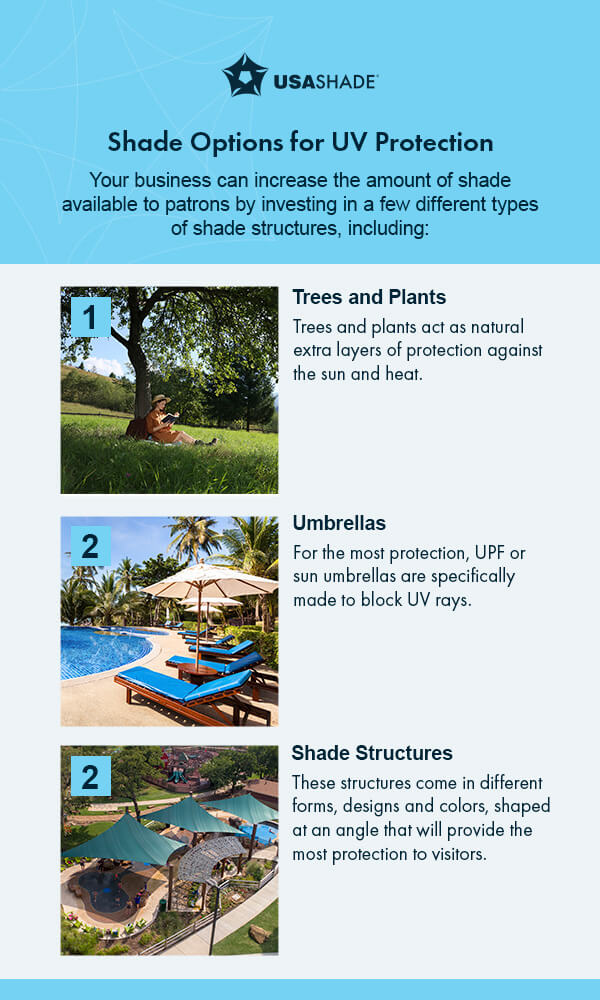
1. Trees and Plants
Trees and plants act as natural extra layers of protection against the sun and heat. Although trees do not fully block UV rays, large deciduous canopy trees with dense foliage, such as oak trees, provide more protection and help create cool, shaded spaces. Large, broad-spreading, medium-sized round trees provide the best shade and most protection from UV light for most of the day.
Alongside other shade measures, like shade structures, you can use trees and plants to create a beautiful, well-landscaped outdoor space that provides sufficient UV protection.
2. Umbrellas
Regular umbrellas can block UV rays. However, this capability depends on the umbrella’s material and size. The larger, darker and more opaque the umbrella is, the more UV light you’ll block — especially reflected radiation. For the most protection, UPF or sun umbrellas are specifically made to block UV rays.
3. Shade Structures
Shade structures can be designed and customized for any kind of outdoor space. These structures come in different forms, designs and colors, shaped at an angle that will provide the most protection to visitors against UV exposure. For maximum protection, opt for a fabric structure that blocks a high percentage of the sun’s UV rays.
As a general rule, the darker or brighter the color, the more protection you’ll have from UV light. Dark and bright colors transmit less UV radiation than lighter colors of the same material. Keep in mind they also absorb more heat. Browse our shade structure fabric colors to get a better idea of how much UV blocking you can expect from each color.
Effective UV Protection Strategies
As a business owner or property manager, you want to create the most comfortable experience for your customers, employees and patrons. Part of this goal means ensuring your property has a well-designed layout with shade structures that offer maximum UV ray protection. Whether it’s a clear, bright day or there are clouds in the sky, your visitors will appreciate anything you can add to give them a spot to relax, hang out and simply take a break from the sun.
Here are some tips to enhance sun safety and choose the right shade option for maximum UV protection on commercial properties:
- Evaluate shifting shade patterns: Conduct a thorough property assessment to identify areas with lots of sun exposure. Focus on locations where people may gather or engage in activities and prioritize shade in these areas. Remember that the sun’s position differs depending on the season.
- Use natural shade where possible: Incorporate trees and plants that offer natural shade. Trees with dense foliage can enhance the property’s visual appeal while improving UV protection in the shade.
- Consider shade structures: For large areas, go for shade structures that will provide ample coverage from UV radiation. Position the shade structures strategically to maximize sun protection throughout the day.
- Choose materials with high UV blocking rates: Whether you choose canopies, commercial umbrellas or shade structures, choose materials that offer high UV protection. Look for fabrics with high UPF ratings to ensure you provide as much protection as possible.
- Do regular maintenance: Regularly inspect and maintain your shade structures to ensure their UV protection capabilities remain effective. Repair or replace faded and damaged fabrics to maintain optimal sun safety standards.
- Provide sun safety education: If you manage a space that receives a lot of visitors, such as a school sports field, promote sun safety practices and information among staff and visitors through informational materials and signs.
Provide Reliable Shade With Quality Structures From USA SHADE
Implementing the right shade structures will allow your business to create a sun-safe environment and prioritize the well-being of those who visit and work at your facility. With expert guidance, the team at USA SHADE will help you implement the most effective UV protection measures tailored to the specific needs of your property, whether you manage a city park or a school campus.
Our experienced team of shade professionals design, manufacture and install shade structures with specialized tools and equipment. USE SHADE structures use materials that block up to 96% of the sun’s harmful UV rays. Further, our variety of materials offers varying degrees of translucency, light reflectivity, weather protection and non-combustibility. We also offer fabric sail replacement and repair services for USA SHADE-installed structures.
Are you ready to install durable, effective shade structures and create a better experience for your customers and staff? Let’s narrow down the best shade structure type for your property. Request a quote from us today to start optimizing your outdoor space.


